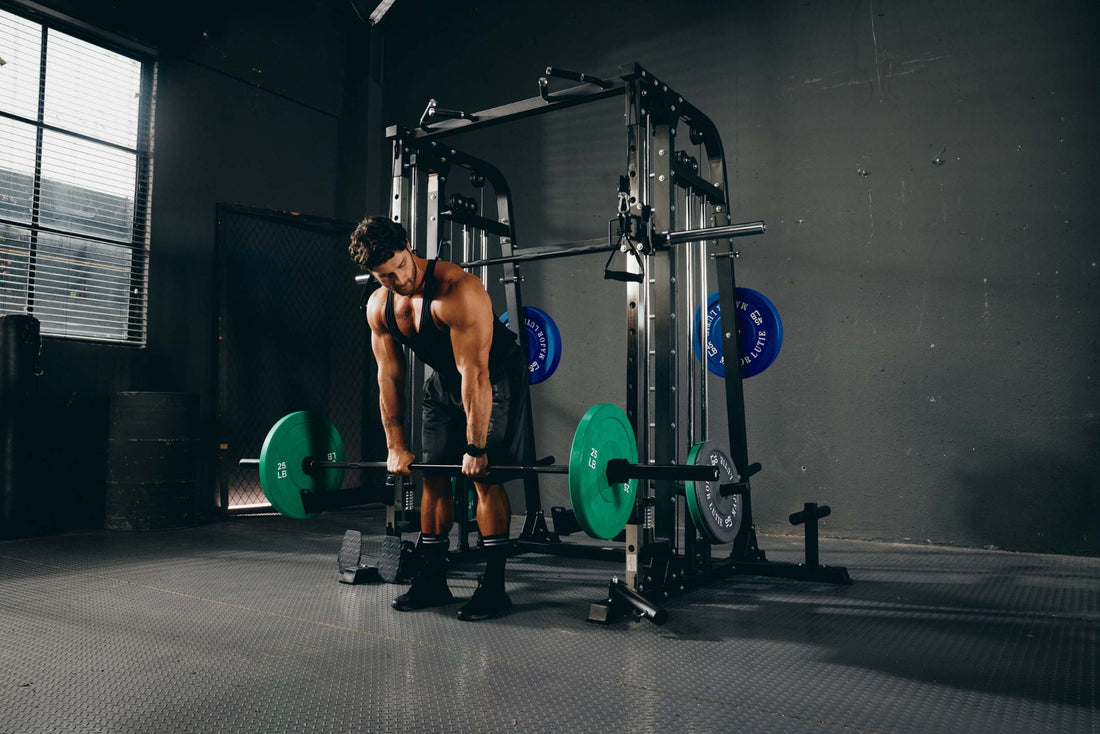
Deadlifts are often associated with barbells and heavy lifting, but did you know you can achieve similar benefits using dumbbells? Curious about how to do a deadlift with dumbbells to enhance your fitness routine? This comprehensive guide will not only walk you through the correct form and technique but will also explain the myriad benefits and variations that can keep your workouts fresh and effective.
The deadlift is a powerhouse move that targets multiple muscle groups at once. When performed correctly, it can improve your strength, stability, and overall athleticism. However, incorrect form can lead to injury, so it's crucial to get it right. In this article, we'll break down the steps to perform a deadlift with dumbbells, discuss common mistakes to avoid, and offer tips to maximize your results.
Why Choose Dumbbells for Deadlifts?
Before we dive into the how-to, let’s discuss why dumbbells are a great choice for deadlifts:
- Versatility: Dumbbells are incredibly versatile and allow for a wide range of motion and exercise variations.
- Accessibility: They are easier to store and are more accessible for home workouts compared to a full barbell set.
- Stability and Balance: Using dumbbells can help to improve your balance and stability since each side of your body has to work independently.
- Joint-Friendly: Dumbbells typically allow for a more natural range of motion, which can be less stressful on your joints.
Equipment Needed
Here's what you'll need to perform a deadlift with dumbbells:
- A pair of dumbbells (Choose a weight that’s challenging but allows you to maintain proper form)
- A clear space to move in
- A mirror (optional but helpful for checking your form)
How to Do a Deadlift with Dumbbells: Step-by-Step Instructions
Follow these steps to perform a deadlift with dumbbells:
- Starting Position: Stand with your feet shoulder-width apart, holding a dumbbell in each hand. Your palms should face your thighs, and your knees should be slightly bent.
- Hinge at the Hips: Keeping your back straight and chest up, hinge at your hips to lower the dumbbells towards the floor. Keep the dumbbells close to your legs as you descend.
- Lower Until You Feel a Stretch: Lower the dumbbells until you feel a stretch in your hamstrings, which should be around mid-shin level for most people.
- Lift Back Up: Drive through your heels to lift back up to the starting position. Make sure to keep your back straight and squeeze your glutes at the top of the movement.
- Repeat: Repeat for the desired number of reps.
Common Mistakes to Avoid
Even though a deadlift with dumbbells might seem straightforward, there are still common mistakes to avoid:
- Rounding the Back: This can lead to serious injury. Always keep a neutral spine.
- Bending the Knees Too Much: Remember, this is not a squat. Your knees should be slightly bent but the movement should primarily come from your hips.
- Lifting with the Lower Back: Engage your core and use your legs to lift, not your lower back.
- Not Engaging the Core: A tight core stabilizes your spine and helps prevent injury.

Tips for Maximizing Your Results
Here are some tips to help you get the most out of your deadlifts with dumbbells:
- Warm-Up: Always start with a good warm-up to prepare your muscles and joints.
- Consistency: Like any exercise, consistency is key. Include deadlifts in your routine at least twice a week for the best results.
- Progressive Overload: Gradually increase the weight of your dumbbells to continue challenging your muscles.
- Focus on Form: Quality over quantity. Ensure your form is perfect, even if it means doing fewer reps.
- Incorporate Variations: Try different types of deadlifts like sumo deadlifts or single-leg deadlifts to keep your muscles guessing and to hit different muscle groups.
Benefits of Deadlifting with Dumbbells
Incorporating deadlifts with dumbbells into your fitness routine can offer several benefits:
- Improved Muscle Coordination: Engages multiple muscle groups simultaneously for better overall muscle coordination.
- Enhanced Core Strength: A strong core helps with balance and overall strength, which is essential for many other exercises.
- Better Balance and Stability: Since each side of the body works independently, dumbbell deadlifts help in improving balance.
- Increased Muscle Hypertrophy: Effective for muscle growth, especially in the hamstrings, glutes, and lower back.
- Reduced Risk of Injury: Proper execution with dumbbells can lessen the risk of injury.
Variations to Keep Your Workouts Fresh
Monotony can derail even the most disciplined fitness enthusiasts. Here are some deadlift variations to keep your workouts fresh and engaging:
- Single-Leg Deadlift: This variation challenges your balance and targets your hamstrings more intensely.
- Sumo Deadlift: Stand with a wider stance and point your toes outward. This targets your inner thighs and glutes.
- Romanian Deadlift: Focuses more on the hamstrings by minimizing knee bend.
- Deficit Deadlift: Stand on a raised platform to increase the range of motion and make the exercise more challenging.
Conclusion
Understanding how to do a deadlift with dumbbells can be a game-changer in your fitness journey. Not only does this exercise offer tremendous benefits in terms of muscle growth, strength, and stability, but it's also highly versatile and accessible. Remember, the key to maximizing these benefits is maintaining proper form, being consistent, and gradually challenging yourself with progressive overload.
If you follow this guide, you're well on your way to mastering the deadlift with dumbbells and reaping the rewards it has to offer. So, grab those dumbbells and start deadlifting your way to a stronger, more balanced body!



















